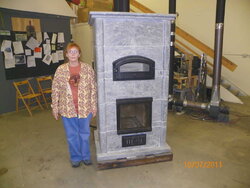Prof
Minister of Fire
fox9988,
You are assuming the 80% efficient products are creating something equal - in this case equal heat. The 2 products, a wood stove and a masonry heater are creating 2 different products that you are assuming to be equal and are calling "heat". Heat is not always heat. If this is in fact occurring where one heating device is using much less wood - the only explanation can be found in the different kinds of heat each appliance creates.
The heat from a wood stove (80% efficient) and the heat from a masonry heater (80% efficient) respond differently in the environments that they are placed in. The environments can be manipulated to cause the wood stove heat to lose its "what we perceive as heat" more rapidly. "Heat" is not always just "heat". These 2 different devices are creating 2 different products. Like a refinery creating gasoline and diesel fuel. Diesel and gas are similar but not the same.
This mason could be correct in his statement. about using much less wood.
Heat is the transfer of energy between two systems. In the case of wood burning, the transfer occurs between the wood and the room. There is only so much energy in 40 lbs of wood. I agree, a stove and a MH transfer energy in differnt ways. More specifically, the ways in which heat transfers (conduction, convection, and radiation) are in differnt proportions. However, short of something magical that breaks the laws of physics, the amount of energy in a given quantity of wood is fixed--so I don't see how the mason could be correct if making a comparison between a MH and an EPA wood stove.





